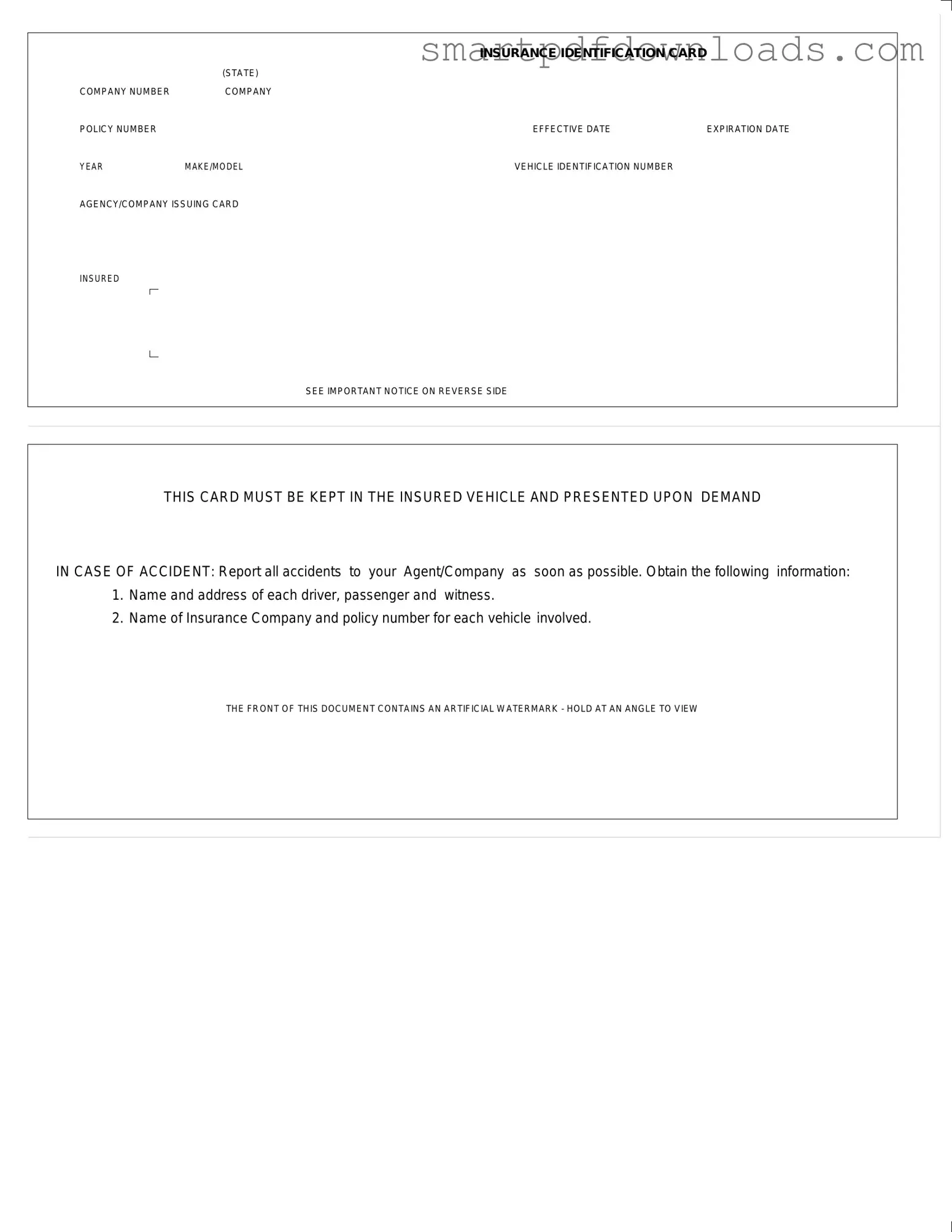Auto Insurance Card Form
An Auto Insurance Card is an essential document that proves you have the required insurance coverage for your vehicle. This card contains important information, such as the insurance company’s details, policy number, and the vehicle's identification number. It is crucial to keep this card in your vehicle and present it when requested, especially in the event of an accident.
Edit Auto Insurance Card Online

